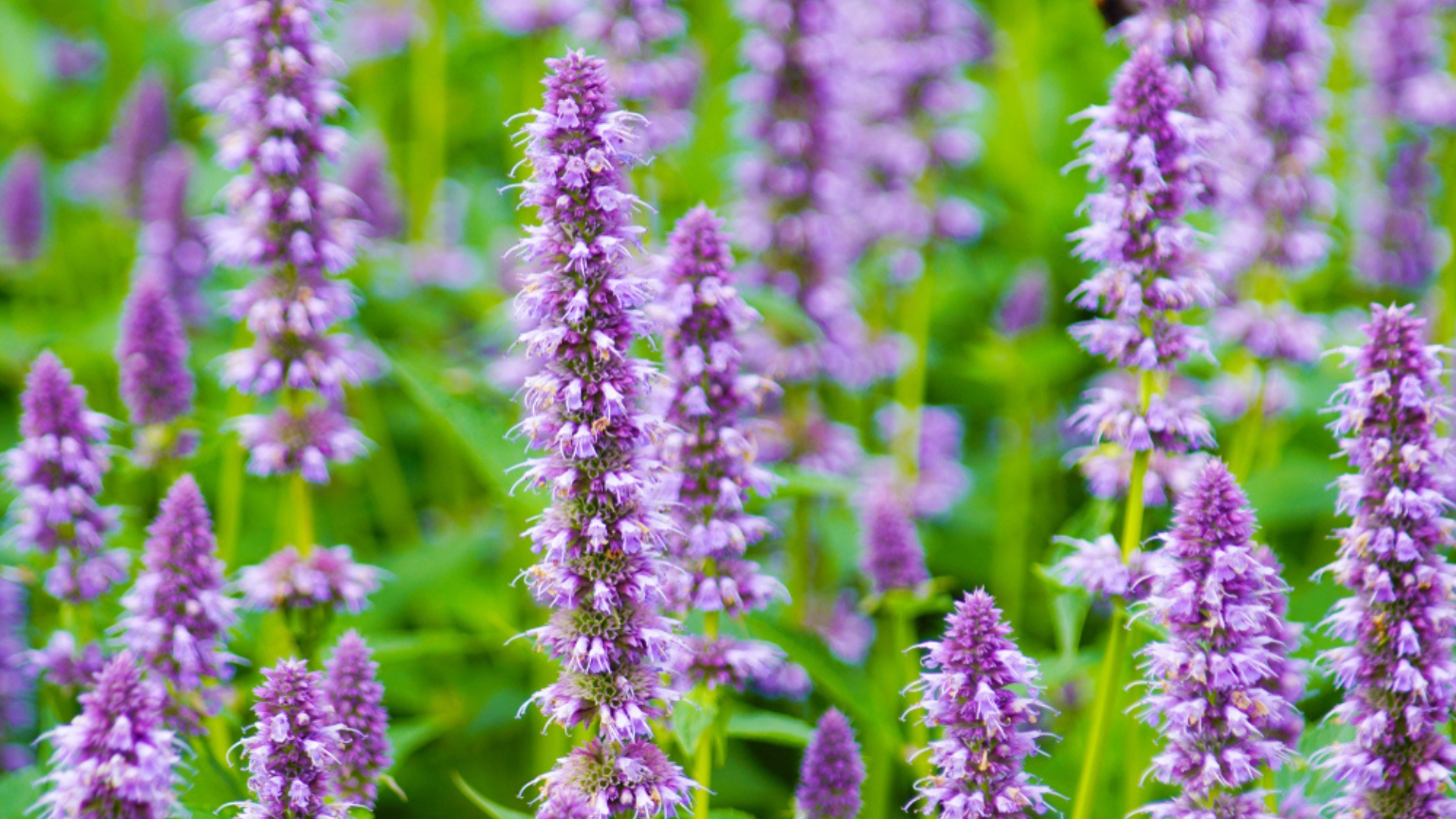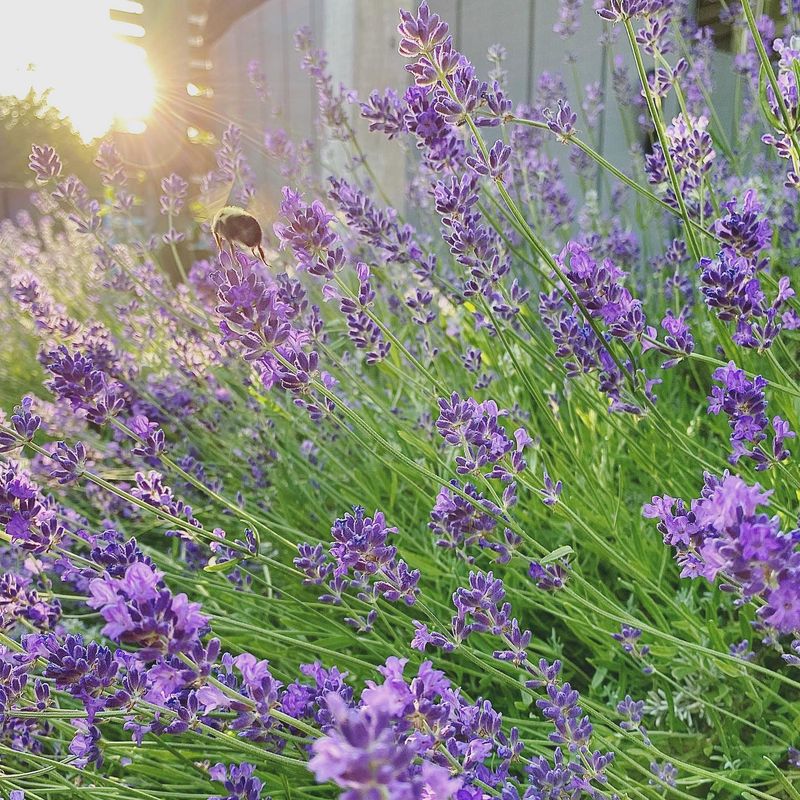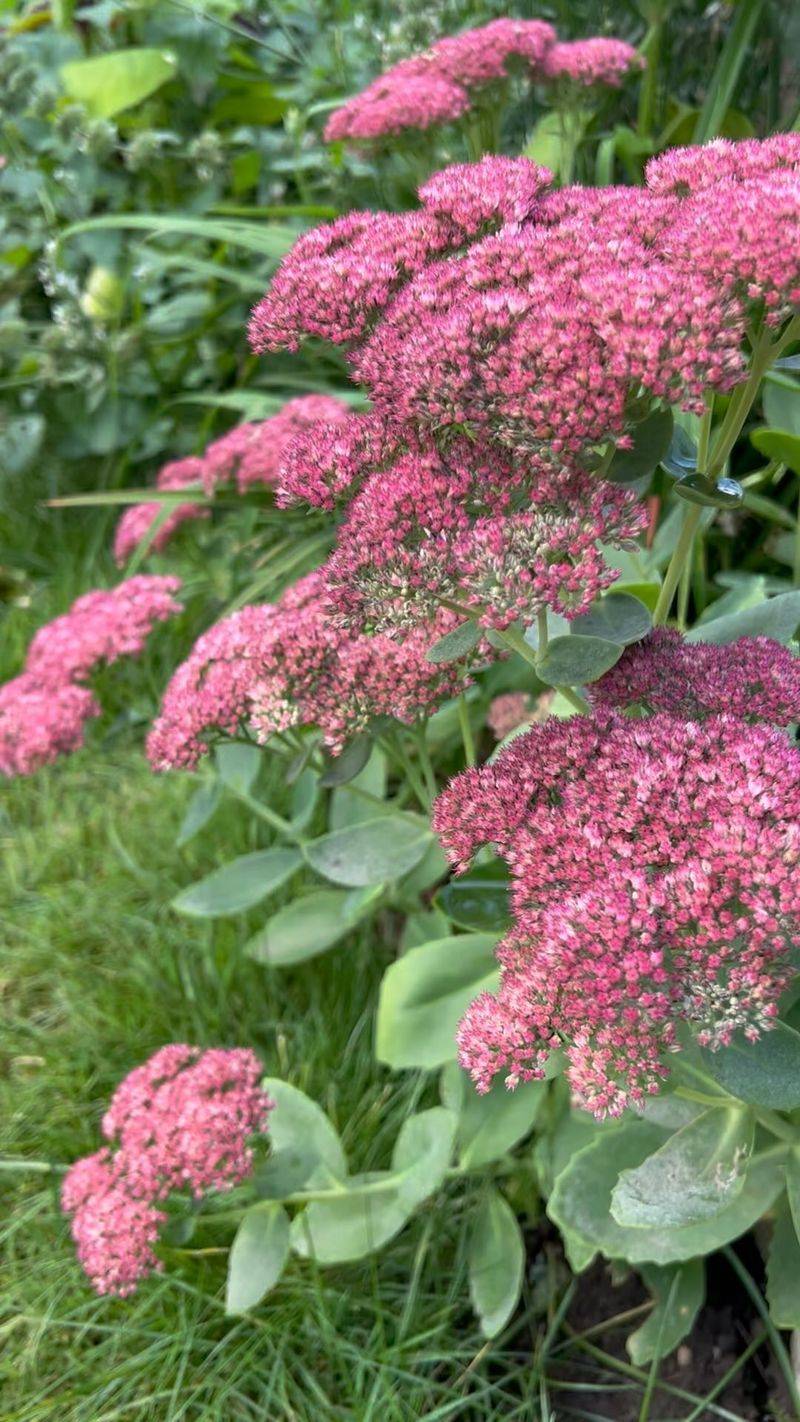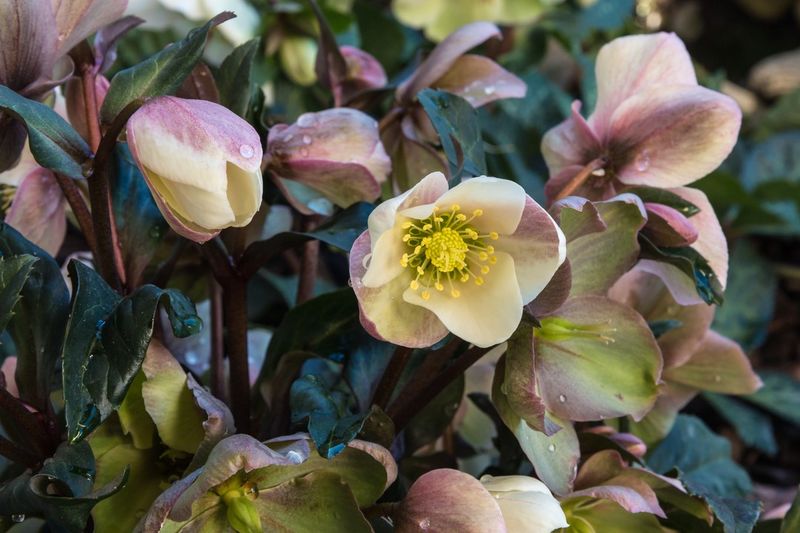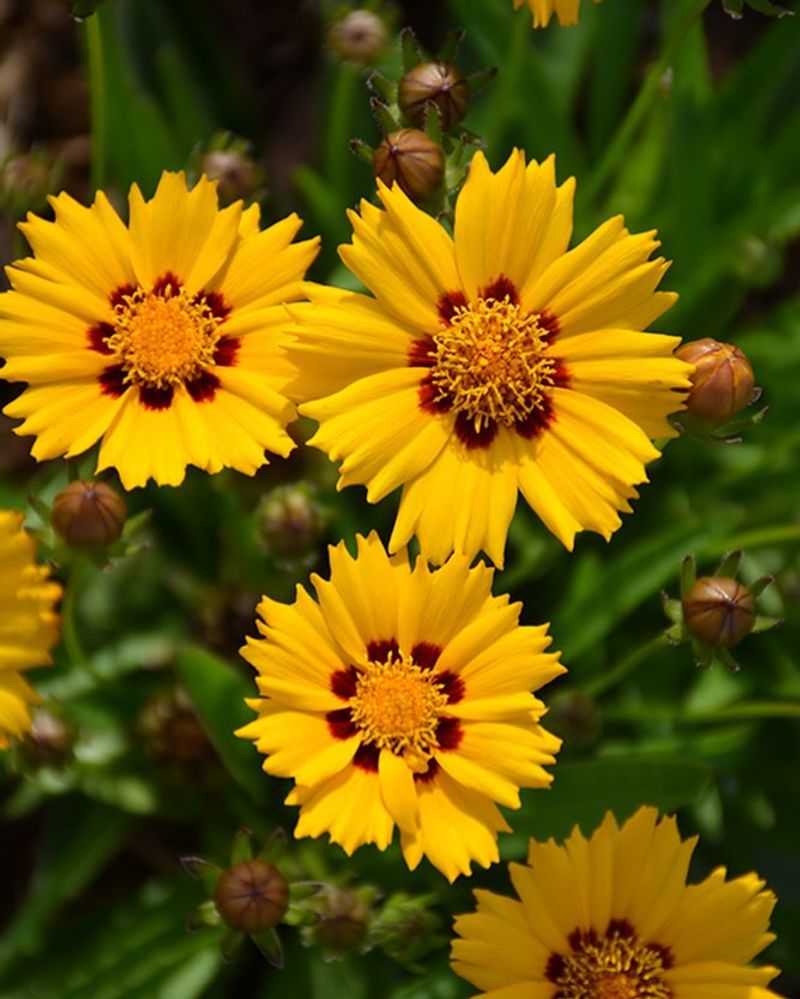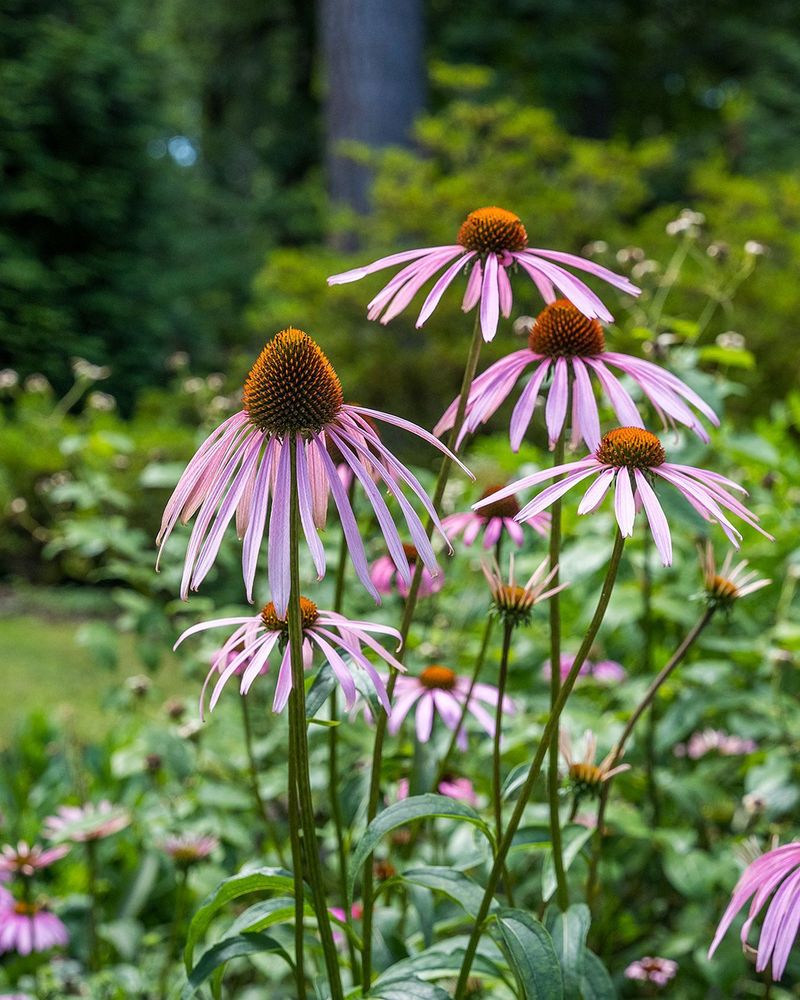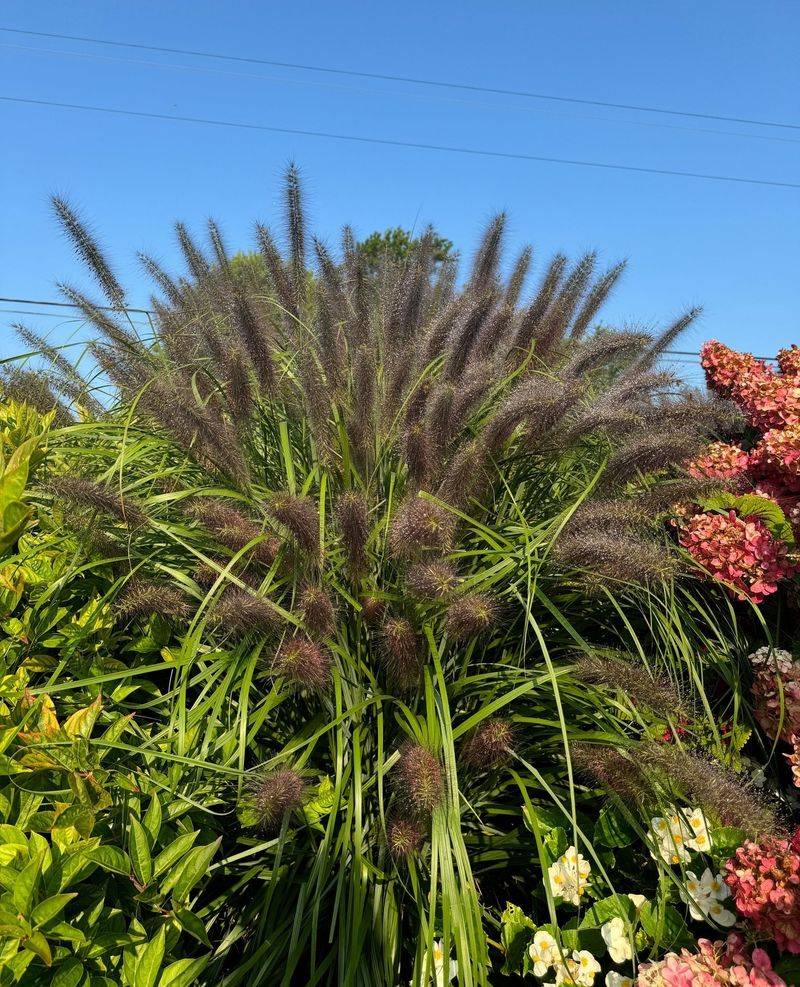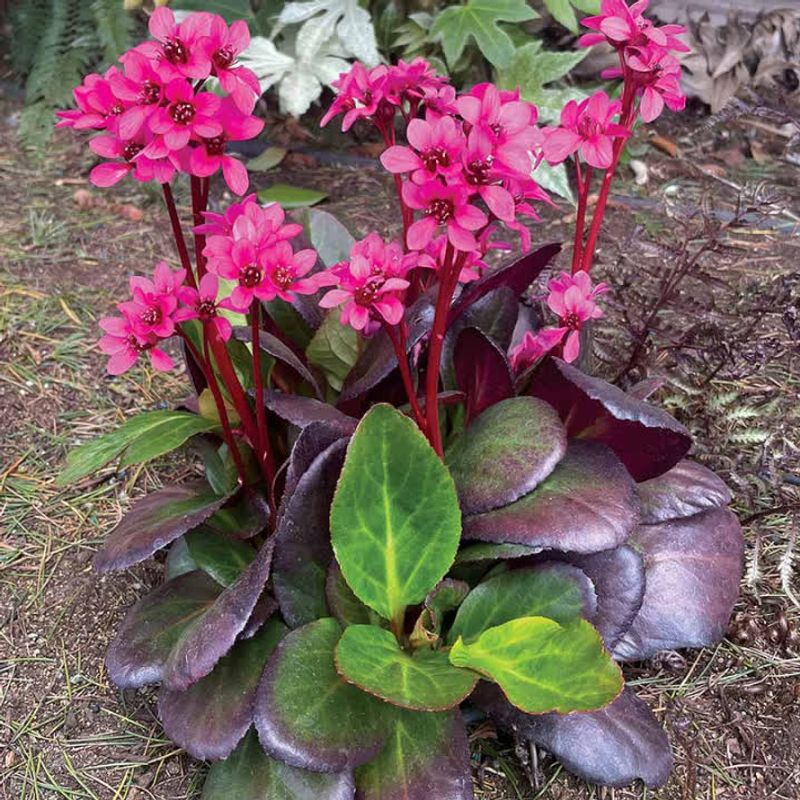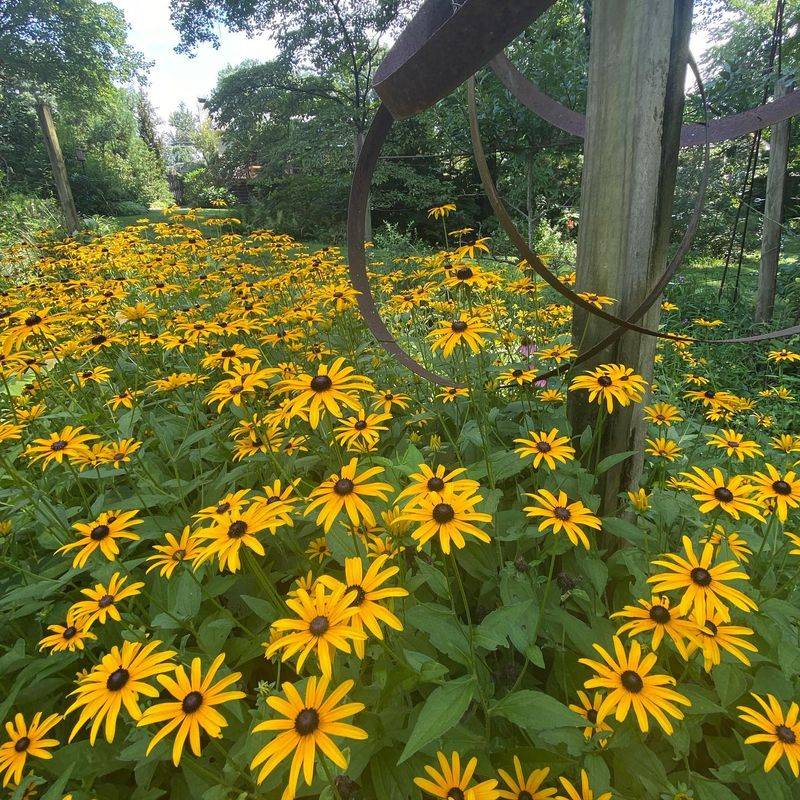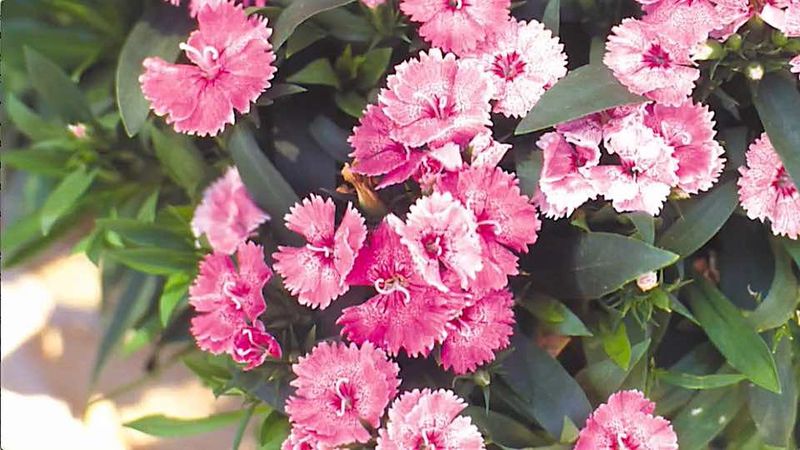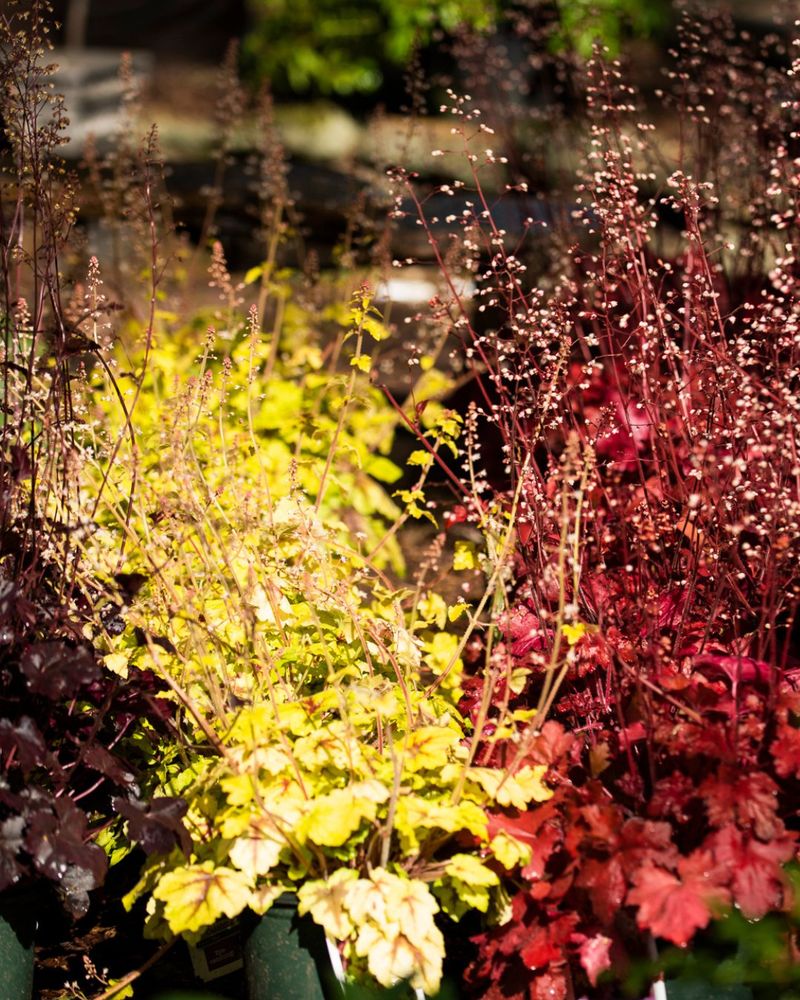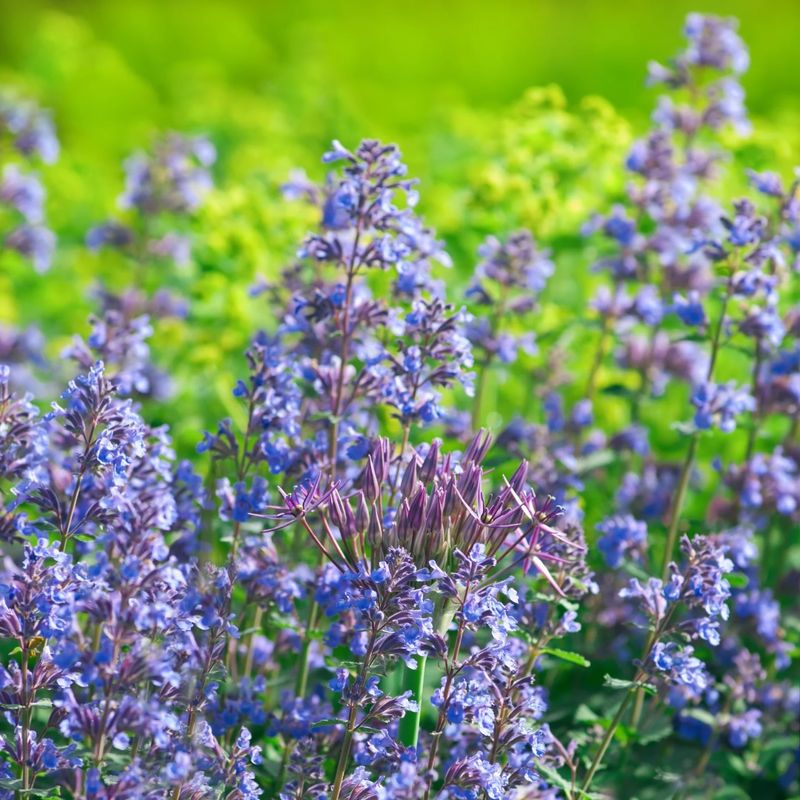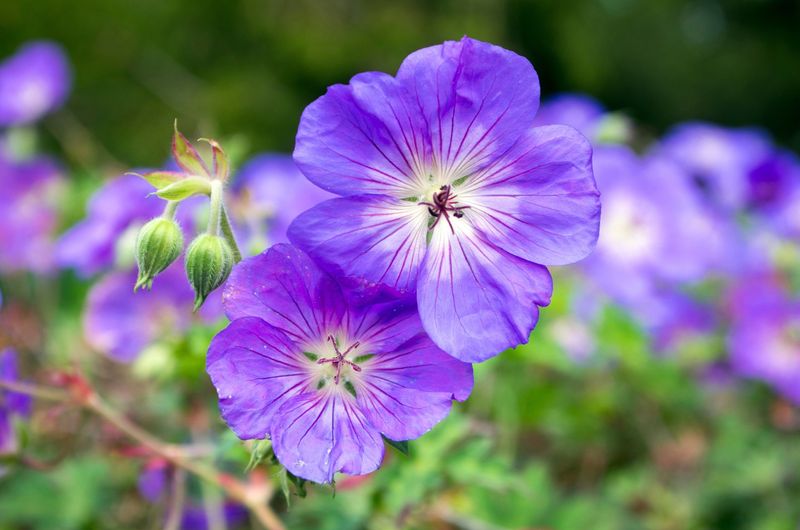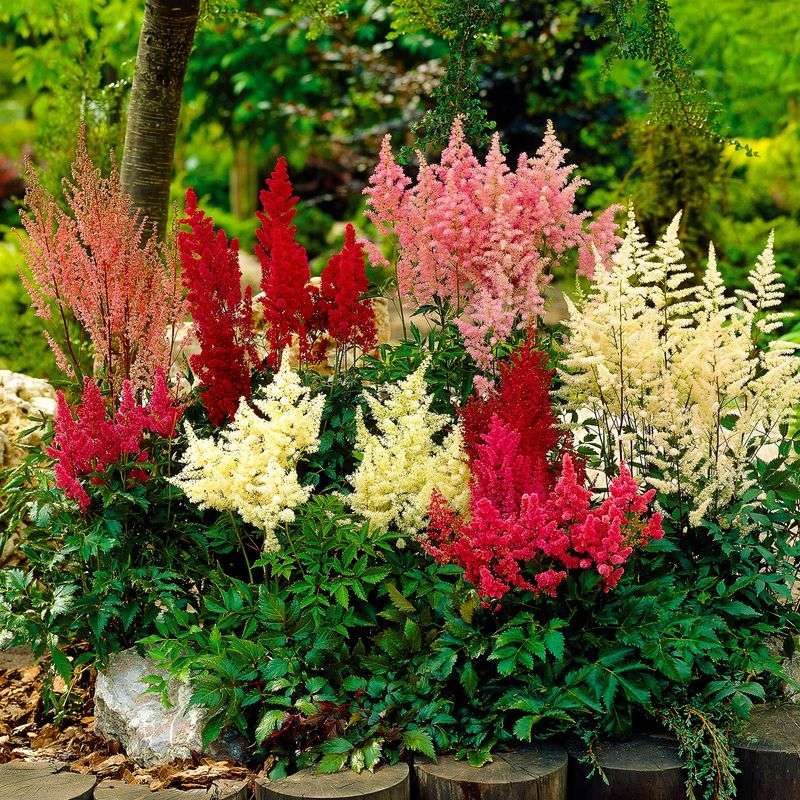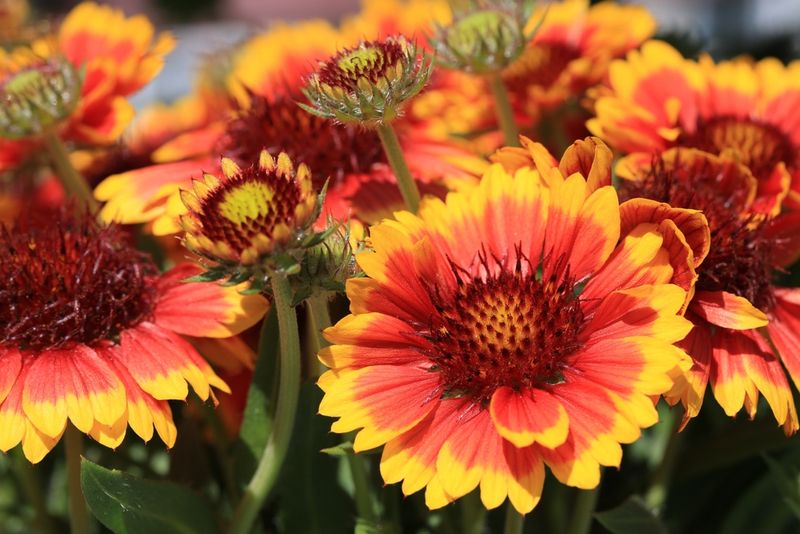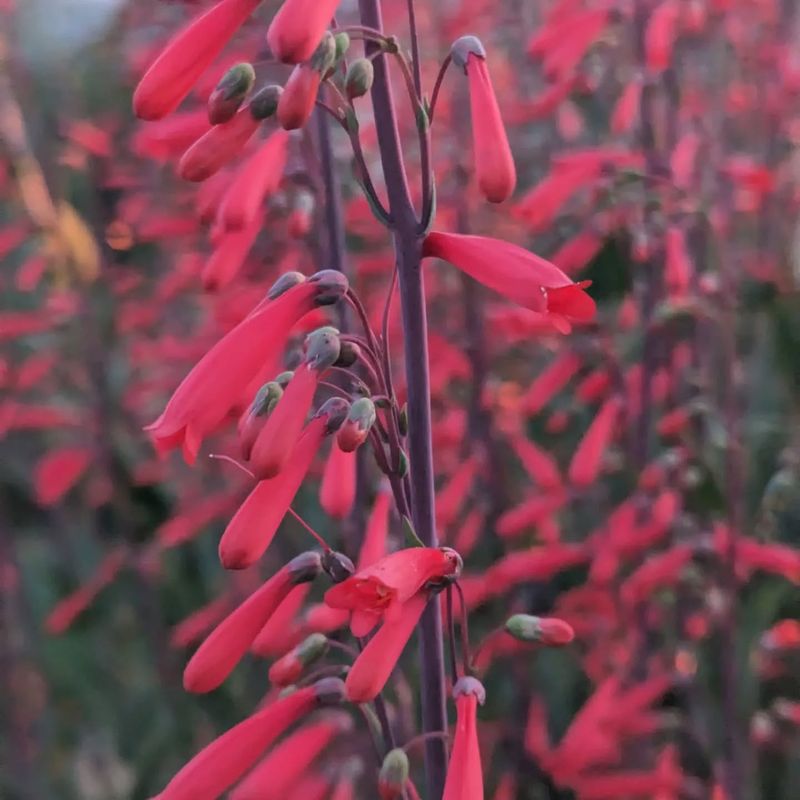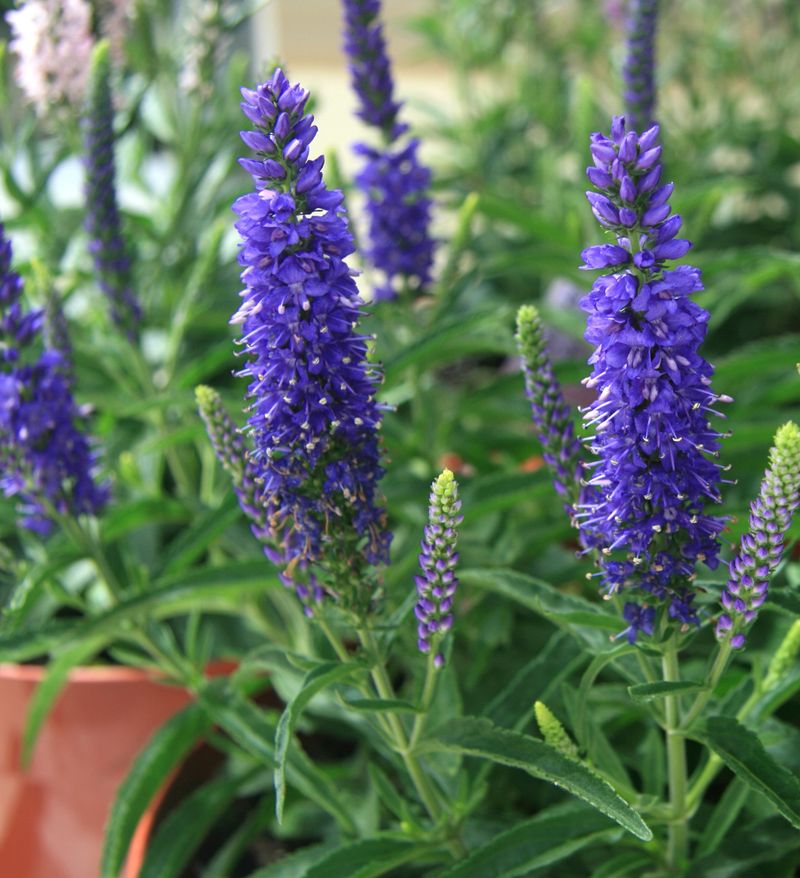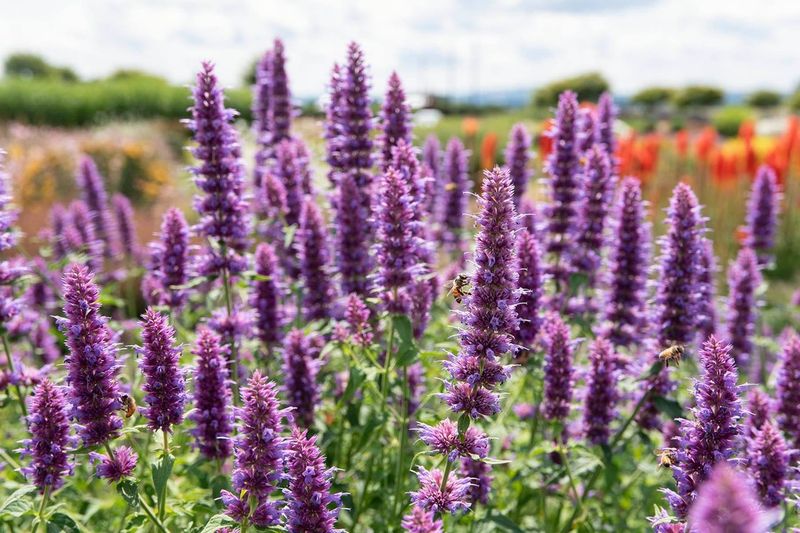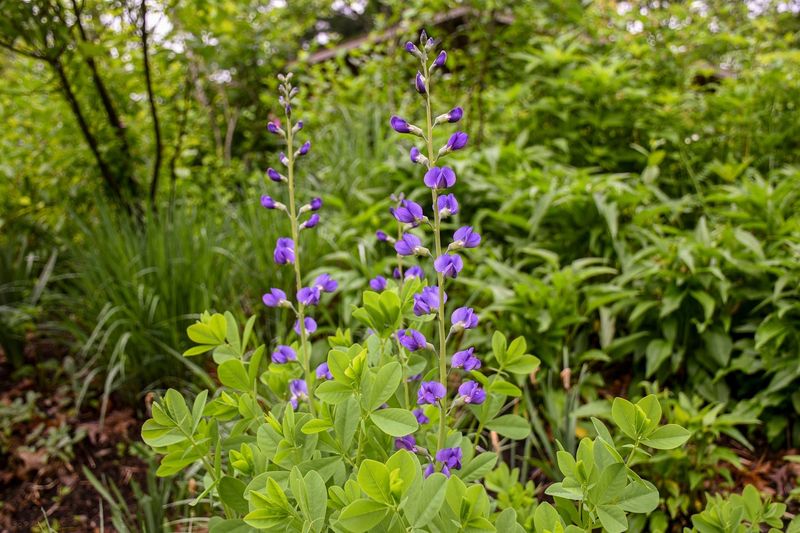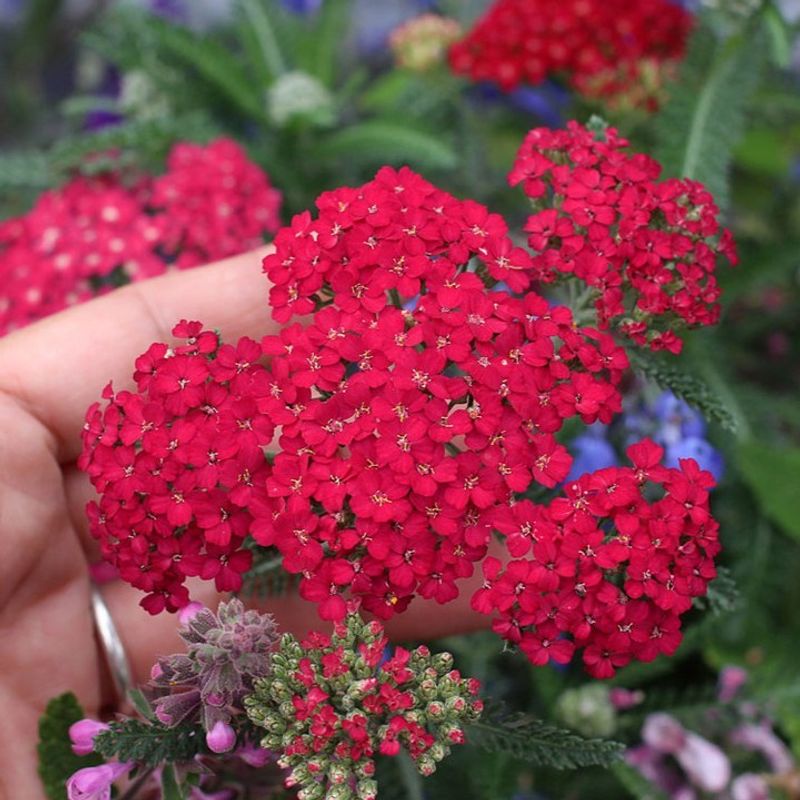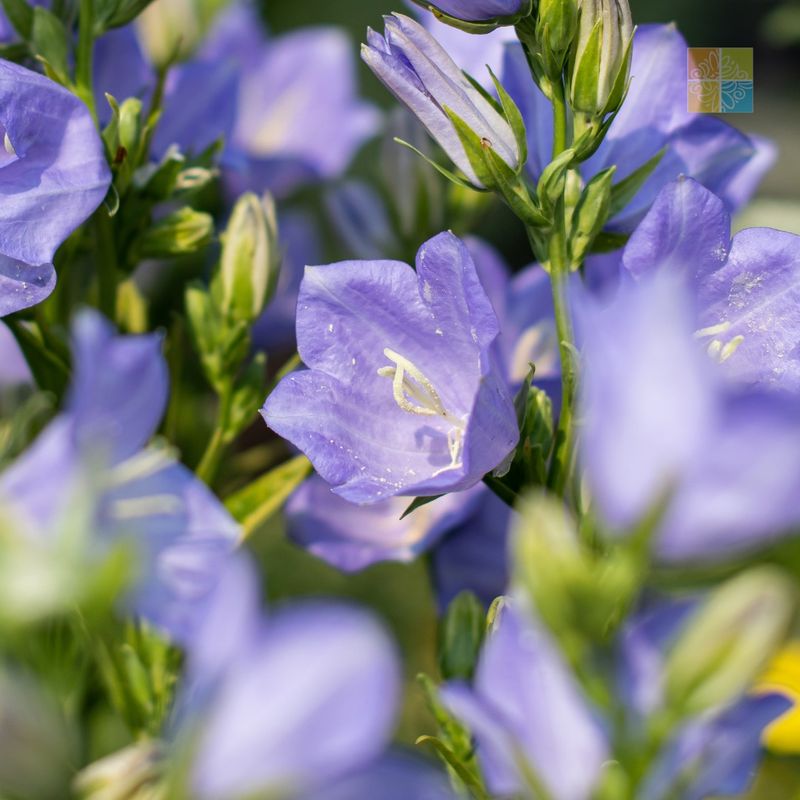Beautiful gardens don’t have to disappear when winter comes! Year-round flowers and perennial plants keep your outdoor space colorful and lively across all seasons. These hardy plants return year after year, saving you time and money while creating a sustainable landscape.
Let’s explore some amazing options that will transform your garden into a continuous display of natural beauty.
1. Lavender: The Fragrant Wonder
Lavender’s silvery-green foliage and purple blooms create a stunning visual display while filling your garden with calming scent. This Mediterranean native thrives in sunny spots with well-drained soil.
Beyond its beauty, lavender serves multiple purposes – from culinary uses to homemade sachets. The plants form compact bushes that maintain structure even when not flowering.
With minimal care requirements and excellent drought tolerance, lavender continues performing for 5-10 years before needing replacement. Simply trim back after flowering to maintain its attractive shape.
2. Sedum ‘Autumn Joy’: Fall’s Faithful Companion
Bursting with star-shaped pink flowers that deepen to rusty red, Sedum ‘Autumn Joy’ delivers a spectacular late-season show when many plants have faded. The succulent leaves form an attractive blue-green mound throughout summer.
Winter brings another dimension as the dried flower heads catch frost, creating natural sculptures in the garden. Birds appreciate the seeds during colder months.
Practically maintenance-free, this tough plant shrugs off drought, poor soil, and neglect. Divide clumps every few years to maintain vigor and spread this garden gem to new locations.
3. Hellebores: Winter’s Secret Treasure
Nicknamed ‘Christmas Rose’ or ‘Lenten Rose,’ hellebores produce elegant nodding flowers when the garden seems asleep. Their blooms – in shades from white to deep purple – often push through snow, creating magical winter scenes.
Leathery, evergreen foliage provides structure year-round, making hellebores perfect for shade gardens. The plants gradually form impressive clumps that improve with age.
Long-lived and deer-resistant, these woodland natives ask little beyond well-drained soil and occasional removal of tattered leaves. New hybrids offer upward-facing flowers that show off their intricate patterns better.
4. Coreopsis: Sunshine in Plant Form
Cheerful daisy-like blooms blanket coreopsis plants from early summer until frost, creating pools of golden yellow in the garden. Modern varieties expand the color palette to include reds, pinks, and bicolors.
Butterflies flock to these nectar-rich flowers while the airy foliage adds textural interest. Many varieties stay compact, making them perfect for containers or front-of-border situations.
Deadheading spent flowers encourages continuous blooming throughout the growing season. Cut back hard in late fall or early spring to rejuvenate plants and maintain their tidy habit.
5. Echinacea: Medicine for Gardens and Bodies
Native prairie beauty meets modern breeding in echinacea, creating a rainbow of coneflowers that dance above sturdy stems. Traditional purple blooms now share garden space with white, yellow, orange, red, and even green varieties.
Pollinators adore the nectar-rich centers while birds feast on seeds if flower heads remain through winter. Their strong architectural presence works in both formal and naturalistic garden designs.
Medicinal properties have made echinacea famous as an immune-boosting herb. Drought tolerant once established, these prairie natives prefer full sun but tolerate partial shade in hotter climates.
6. Ornamental Grasses: Four-Season Performers
Graceful plumes rising above arching foliage create movement and sound as ornamental grasses respond to every breeze. Summer brings subtle flowers that transform into striking seedheads lasting through winter.
Varieties range from tiny blue fescues perfect for edging to massive 8-foot miscanthus suitable for privacy screens. Fall brings spectacular color changes as many grasses turn gold, orange, or burgundy.
Maintenance couldn’t be simpler – cut back deciduous types in late winter before new growth emerges. Evergreen varieties need only occasional combing to remove dead foliage and maintain their tidy appearance.
7. Bergenia: The Pig-Squeak Plant
Large, glossy evergreen leaves form impressive ground-covering rosettes that shine year-round. Spring brings clusters of pink or white flowers hovering above the foliage on sturdy stems.
Nicknamed ‘pig-squeak’ because rubbing the thick leaves between fingers produces a squeaking sound – a fun garden activity for kids! The leathery foliage often turns burgundy in winter, adding seasonal interest.
Thriving in partial shade where many plants struggle, bergenia solves problem areas under trees or along north-facing foundations. Divide congested clumps every few years to maintain vigor and expand your garden’s evergreen presence.
8. Rudbeckia: Black-Eyed Beauty
Golden petals radiating around chocolate-brown centers make rudbeckia (black-eyed Susan) instantly recognizable. These native wildflowers bloom prolifically from midsummer through fall when many perennials have finished.
Reaching heights from 18 inches to 7 feet depending on variety, rudbeckias fit gardens of any size. Their naturalistic charm works perfectly in meadow plantings or more structured perennial borders.
Goldfinches and other birds feast on the seed heads if left standing through winter. Drought tolerant and rarely bothered by pests, these prairie natives ask little besides full sun to perform their summer magic.
9. Dianthus: The Cottage Garden Classic
Spicy clove fragrance wafts from the frilly blooms of dianthus, explaining their common name ‘pinks’ (from the pinked or notched petal edges). Blue-gray foliage forms neat mounds that remain attractive even when not in flower.
Colors range from white through all shades of pink to deepest burgundy, often with contrasting centers or edges. Many varieties rebloom if deadheaded promptly after the first flush.
Perfect for rock gardens, containers, or edging pathways, these drought-tolerant plants prefer lean soil and excellent drainage. A light shearing after blooming keeps plants compact and encourages fresh foliage growth.
10. Heuchera: Colorful Foliage Champion
Heucheras (coral bells) revolutionized shade gardening with their kaleidoscope of leaf colors – from lime green to deep purple, amber to silver, often with dramatic veining. The evergreen foliage maintains interest through all seasons.
Delicate flower spikes rise above the colorful mounds in summer, attracting hummingbirds with their tiny bell-shaped blooms. New varieties offer improved heat and humidity tolerance for challenging climates.
Shallow-rooted and sometimes prone to heaving in freeze-thaw cycles, mulching helps protect plants in winter. Divide every few years to rejuvenate plants and create more of these shade garden superstars.
11. Nepeta: The Cat’s Meow
Clouds of lavender-blue flowers hover above aromatic gray-green foliage, creating a soft, billowing effect in the garden. Commonly called catmint, nepeta attracts beneficial insects while repelling many garden pests.
Drought-tolerant and deer-resistant, these plants bloom for months with minimal care. A quick shearing after the first flush of flowers triggers a second show that often lasts until frost.
Modern varieties stay compact without flopping, making them perfect for edging paths or softening hardscape elements. The minty fragrance released when leaves are brushed makes this plant a sensory garden essential.
12. Geranium: The True Perennial Geranium
Not to be confused with annual pelargoniums, true hardy geraniums create weed-suppressing mats of attractive foliage topped with saucer-shaped flowers. Colors range from white through pink to intense blues and purples.
Many varieties offer spectacular fall foliage in shades of red and orange after their long bloom period ends. Their adaptability to sun or shade makes them versatile garden problem-solvers.
Low-maintenance and long-lived, hardy geraniums thrive with minimal intervention. Simply cut back tired foliage after flowering to encourage fresh growth and possible rebloom in cooler weather.
13. Astilbe: Feathery Shade Performer
Feathery plumes in shades of white, pink, red, and lavender rise above fern-like foliage, bringing color to shady spots where few flowering plants thrive. The airy flower clusters add vertical interest to woodland gardens.
Varying heights from dwarf 6-inch varieties to statuesque 4-foot specimens allow for creative layering in garden designs. The dried flower heads provide winter interest if left standing.
Unlike many shade plants, astilbes prefer consistent moisture rather than dry conditions. Their compound leaves add textural contrast to broad-leaved shade companions like hostas and heucheras.
14. Gaillardia: The Blanket Flower
Fiery sunset colors characterize gaillardia (blanket flower), with daisy-like blooms in combinations of red, orange, and yellow that brighten gardens from early summer until frost. Native to North American prairies, these plants embody rugged durability.
Heat and drought tolerant, gaillardias thrive in poor soil where many perennials struggle. Their nectar-rich flowers attract butterflies and bees throughout the growing season.
Deadheading extends the already impressive bloom time, though some gardeners leave the interesting seedheads for birds. Short-lived but self-seeding, these plants maintain their presence without becoming invasive.
15. Penstemon: Hummingbird Heaven
Tubular flowers in jewel tones dangle from upright stems, creating vertical accents in the summer garden. Hummingbirds dart from bloom to bloom, attracted by the nectar-filled flowers of these North American natives.
Varieties range from diminutive rock garden types to impressive 4-foot specimens. Many feature attractive evergreen or semi-evergreen foliage that maintains interest beyond the flowering season.
Excellent drainage is essential for success with penstemons, especially during winter months. Leaving the spent flower stalks standing provides winter interest and helps protect the crown from extreme cold.
16. Veronica: Spike of Brilliance
Slender spires of densely packed flowers – usually in shades of blue but also white, pink, or purple – make veronica (speedwell) a vertical accent in the perennial border. The long bloom period from early to late summer provides reliable color.
Neat mounds of glossy foliage remain attractive throughout the growing season. Shorter varieties make excellent edging plants, while taller types work well in the middle of mixed borders.
Removing spent flower spikes encourages additional blooms and prevents unwanted self-seeding. Most varieties prefer consistent moisture but established plants show good drought tolerance.
17. Agastache: Aromatic Treasure
Licorice-scented foliage topped with spikes of tubular flowers in violet, blue, pink, or orange make agastache (hyssop) a sensory delight. Brushing against the leaves releases their anise fragrance into the summer air.
Pollinators flock to these nectar-rich blooms from midsummer until frost. The upright habit provides architectural structure in perennial borders or herb gardens.
Excellent heat and drought tolerance make these plants perfect for challenging spots. Sharp drainage, especially in winter, ensures their survival in colder climates where they may be semi-woody rather than fully herbaceous.
18. Baptisia: The False Indigo
Lupine-like flower spikes in blue, yellow, white, or purple crown baptisia’s blue-green foliage in late spring. After flowering, interesting seed pods develop, rattling pleasingly in autumn breezes.
Deep taproots make these prairie natives extremely drought tolerant once established but also resistant to transplanting. Plan their permanent location carefully!
Minimal maintenance requirements make baptisia perfect for busy gardeners – simply cut back the dried stems in late winter. Their shrub-like presence (up to 4 feet tall and wide) provides structure throughout the growing season.
19. Achillea: The Yarrow’s Tale
Flat-topped flower clusters in shades from white to deep red crown ferny, aromatic foliage, creating an airy presence in sunny borders. Named for Achilles, who supposedly used it to treat soldiers’ wounds, yarrow combines beauty with historical significance.
Butterflies and beneficial insects flock to the landing-pad blooms while deer and rabbits avoid the strongly scented foliage. Modern varieties offer improved mildew resistance and stronger stems that resist flopping.
Few plants match yarrow’s tolerance for poor soil and drought conditions. Deadheading extends the bloom period and prevents excessive self-seeding in smaller gardens.
20. Campanula: Bellflower Beauty
Bell-shaped blooms in shades of blue, purple, pink, or white give campanulas their common name ‘bellflowers.’ Growth habits vary widely – from tiny rock garden cushions to statuesque border plants.
Many varieties bloom for extended periods, especially if deadheaded regularly. The charming nodding flowers combine beautifully with other perennials in cottage-style gardens.
Low-growing types make excellent ground covers or rock garden specimens. Most prefer moderately fertile soil with good drainage and perform best with afternoon shade in hotter climates.

